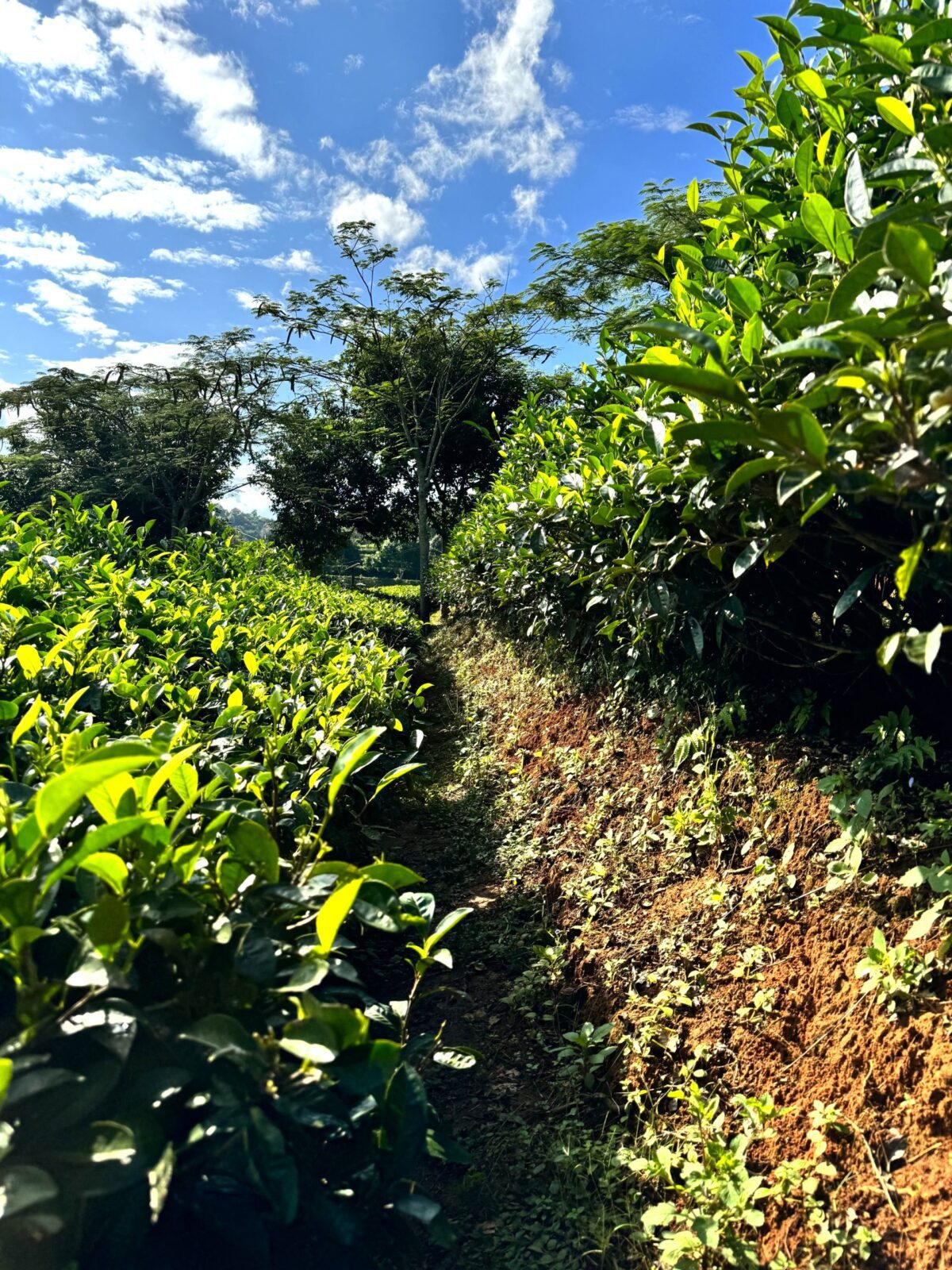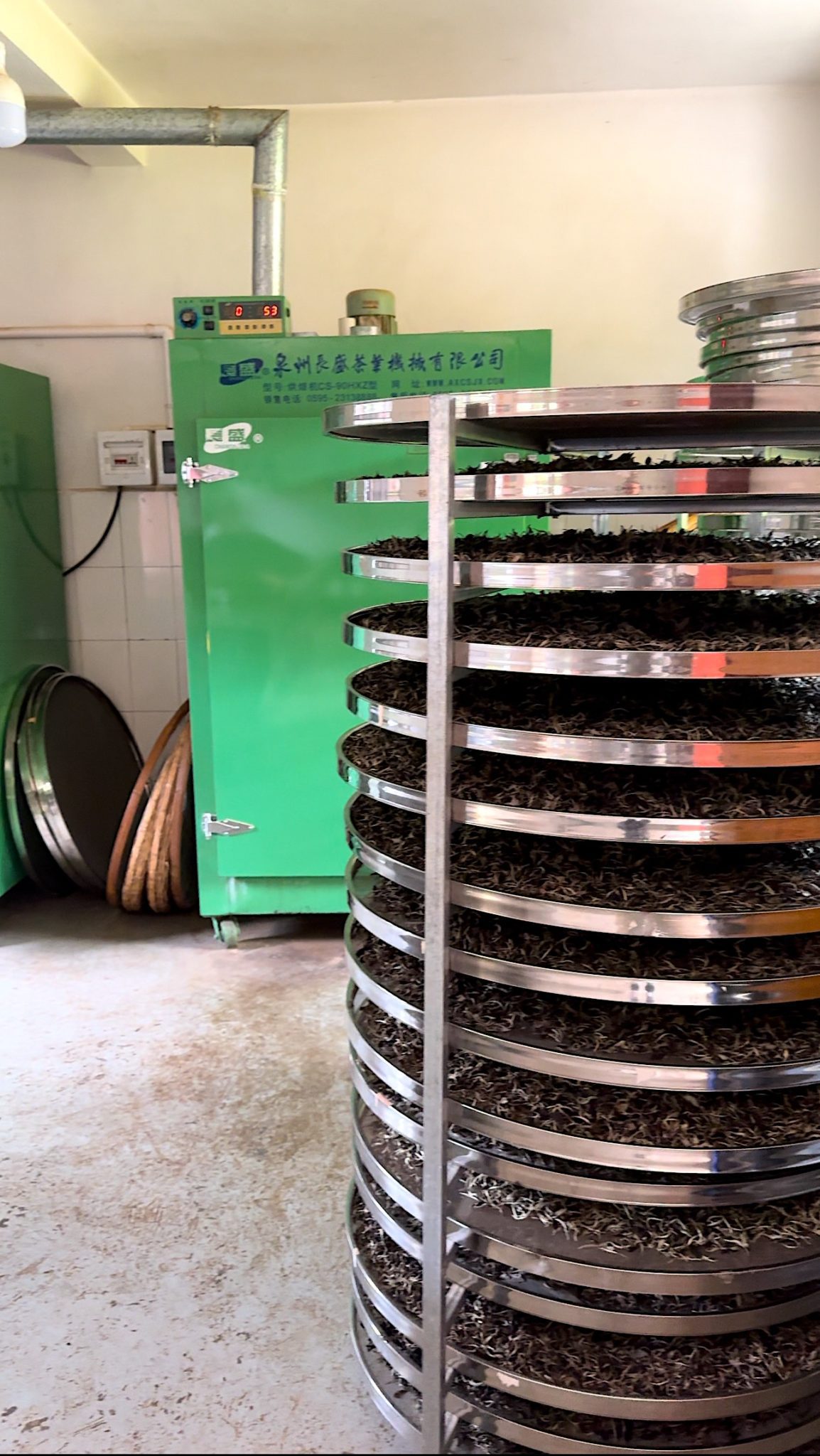
Learn the Process of Picking to Packaging China’s Finest Tea
I just hopped aboard my connecting high-speed train from Kunming’s south train station towards Pu’er, a three-hour train ride with a final stop that goes all the way to Xishuangbanna. We’re not heading that far though, we’re going tea picking in China’s tea capital, Pu’er in the southern part of Yunnan.
Tea in China is more than just a beverage; it’s a cultural cornerstone, woven into the country’s fabric of history and tradition. Today, all Chinese know about Pu’er, the small city engulfed by lush green hills in China’s remote southwestern province, Yunnan. Some of China’s best tea comes right from this region, as well as the further south region of Xishuangbanna. Yet, the debate rages among locals: is it tea from “Ban Na” or Pu’er that truly claims the title?
This trip to Pu’er isn’t just some tourist escapade. I’ve decided to learn firsthand about the meticulous process of making Pu’er Tea and to make some traditional tea cakes of my own.
Our high-speed train whisked through Yunnan’s endless mountain tunnels and arrived in Pu’er around noon. After checking in at our hotel, we took a Didi over to a small tea plantation that a friend recommended, just outside the city. This is where we would learn about the ancient tea production process and tea picking in China’s tea capital: Pu’er
Arriving in China’s Tea Capital: Pu’er, Yunnan
Our assigned instructor met us at the front entrance and took us to a peaceful room to sip on delightful Pu’er tea while sharing with us some fascinating history. After tea, he guided us over to a small warehouse to pick out a woven basket for collecting tea leaves and a straw hat, our humble tools for the day’s adventure. It happened to be a very sunny, October day and the sunlight was at its brightest just after lunch. After testing out a dozen hats to find one that would eventually fit my head, we ventured out back to the tea plantations. Endless rows of green tea plants divided by smooth dirt paths greeted us upon our arrival.
The Art of Picking Pu’er Tea
There are two tea picking seasons, the Spring and Autumn periods. Autumn tea (秋茶) is the fall harvest that falls between September and November. Though not as refreshing and fragrant as Spring tea (春茶), which falls between March and May, the Autumn tea also has its own unique distinct flavor. Spring tea tends to have a fresher and lighter taste, while Autumn tea has a more mature and stronger flavor.

As I watched our instructor show us the tea buds to search and pick for, I instantly realized the task wasn’t going to be quite as easy as I thought. Having to repeatedly bend over, scan through the thousands of protruding tea leaves, looking for buds, followed by picking out the right leaves was a very time-consuming and laborious process. At the same time, the process requires an abundant amount of patience and a consistent sharp eye. Our instructor instructed us to search for buds with three to four leaves, a telltale sign that the bud was ready to be picked. After giving us the rundown, our tea instructor instructed us to fill up the basket and that he would see us in a couple of hours. Good lord I thought.
With an empty woven basket and wide-brimmed sun hat, we set to work picking away tender tea leaves under the merciless sun that beamed down upon us.
Tea Processing: Withering the Tea Leaves
After about an hour, my girlfriend had surprisingly collected a half-full basket of tea leaves, while I had picked barely enough to cover up the light-tan criss-cross bottom of the woven basket. The instructor, noticing our dreadfully slow pace picked up a basket and helped us collect. With enough tea leaves, we headed back to one of the first-floor tea-processing rooms and dumped the tea leaves onto a wide, flat seave. These seaves are usually made from bamboo or tin frames with a thin metal mesh in between. We picked out the dirty residue and defective leaves, while spreading out the remaining tea leaves evenly.
To prevent the tea leaves from becoming damaged and prevent oxidization from taking place too quickly, we quickly separate the tea leaves onto different seaves to dry. This crucial step will eliminate over 50% of the remaining moisture trapped within the leaves and help to form the tea’s unique character. Needing at least 10-15 hours to whiter, this stage is one of the longer stages of the tea production process.

At this stage, the tea leaves’ cell structure has been broken down further and the original green color begins to darken slightly. This allows the tea leaves to first breathe for a bit and rids of the original bitter taste within the leaves. We carefully carried our seaves over to a designated area to dry on some rolling racks and moved on towards the next step.

Preserving the Tea’s Essence: Sha Qing (Killing the Green)
As we didn’t have time for our leaves to wither, we used another batch that was ready to go through the Sha Qing (杀青) or “Killing the Green” stage. This step is to stop the oxidization process, or “de-enzyming,” and to reduce the bitter flavors that still linger in the tea leaves. Going through the Sha Qing stage also enhances the overall flavor of the tea.
The manual method is to bring the tea leaves over onto what looks like a large wok. At this stage, we dump the tea leaves in batches into the wok to be exposed to high heat for ten to fifteen minutes. The tea leaves are exposed to a high heat with the temperature usually set around 200 – 230 °C. Pu’er tea is usually heated slightly lower to allow for some of the enzymes to remain. This allows the Pu’er tea to age slowly, enhancing the overall flavor. Watching the tea leaves dance and transform before your eyes is actually quite an enjoyable experience.
While in the large wok, the tea roaster needs to continue rolling the tea leaves over and over at an even rate. It feels like a repeated process of picking up a lump of dough and then dropping it, except you sprinkle the leaves as they drop. This takes a bit more effort than you think. Some people are initially a little afraid of the warm temperature, fearing what they believe is a scorching hot temperature. This also softens up the leaves even more and relaxes some of the leaves’ flavor.

Rolling Tea Leaves Into Shape
After completing the Sha Qing stage, the tea roaster scoops out the roasted tea leaves and drops them onto a flat table. At this stage, we begin to apply more pressure while rolling and kneading the tea leaves to remove any remaining moisture still trapped within the leaves. We completed this part of the process within fifteen minutes.
Drying/ Oxidization Process
We then take the rolled out tea leaves, which have become unprocessed tea leaves (毛茶), the raw form of Pu’er tea, and put them onto the seave again to dry. This step will stop the fermentation process and eliminate any remaining grassy flavors. At this step the tea leaves will oxidize and will dry out in the sun for a few days, where they will slowly turn into a crispier, brown color. The Pu’er tea leaves are now ready for the final act: pressing and packaging into the iconic tea cakes.
Stay tuned for Part 2 of Tea Picking in China’s Tea Capital: Pu’er, Yunnan
Photography by Anson Zong-Liscum


Dear Writer
Would you mind sharing the tea plantation context she how to get there? We hope to experience pu’er tea picking and drinking process in the month of April. Thank you for your tip.
Hello Jennifer,
Thanks for the comment. Feel free to send an email and I will happily give you the information regarding the tea plantation I visited and any other further questions you may have.
Anson